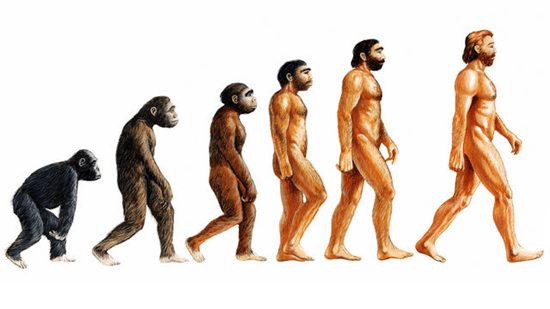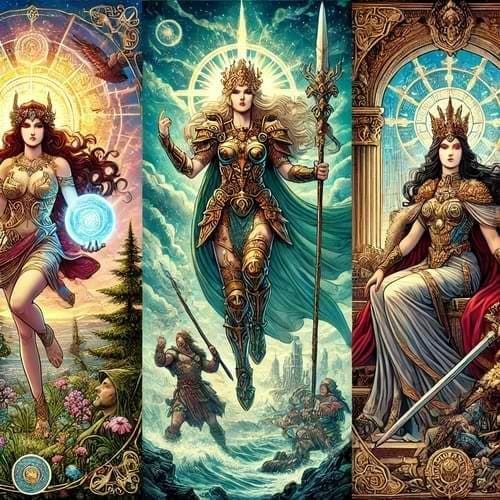In the vast realm of scientific and cultural exploration, two distinct narratives, seemingly unrelated, reveal surprising parallels – Darwin’s Theory of Evolution and the 10 incarnations of Vishnu in Hindu mythology. This article aims to delve into the intricate details of these narratives, exploring their significance and drawing connections that highlight the inherent harmony between science and ancient wisdom.
Darwin’s Theory of Evolution: A Brief Overview

Darwin’s Groundbreaking Ideas
Charles Darwin, in the 19th century, revolutionized the understanding of biological diversity with his groundbreaking Theory of Evolution. This theory posits that species evolve through a process of natural selection, adapting to their environments over successive generations. The fittest survive and pass on their advantageous traits, leading to the diversity of life we observe today.
Natural Selection in Action
The concept of natural selection, often referred to as the “survival of the fittest,” underscores the relentless drive for adaptation and improvement in the natural world. It is a dynamic force that shapes the evolutionary path of species, ensuring their resilience and relevance in changing environments.
The 10 Incarnations of Vishnu: A Mythological Tapestry

Vishnu’s Divine Manifestations
In Hindu mythology, Lord Vishnu, the preserver, is believed to incarnate in various forms to restore cosmic order and protect dharma (righteousness). The ten avatars, known as the Dashavatara, represent a divine saga where Vishnu descends to Earth in different forms during times of crisis.
The Cosmic Drama Unfolds
Each incarnation serves a specific purpose, addressing cosmic imbalances and defeating malevolent forces. From the aquatic Matsya to the transcendent Kalki, these avatars embody the cyclical nature of existence and the eternal battle between good and evil.
Parallel Narratives: Evolutionary Insights and Mythological Allegory
Adaptation as a Universal Theme
The parallels between Darwin’s theory and the Dashavatara become apparent when we examine the core theme of adaptation. While Darwin focuses on physical adaptation in the biological realm, the avatars of Vishnu symbolize spiritual and cosmic adaptation, adjusting to the ever-changing dynamics of existence.
Survival Strategies in Nature and Myth
Just as species evolve to survive in their environments, Vishnu’s avatars manifest to ensure the survival of cosmic harmony. Whether through genetic mutations or divine interventions, both narratives underscore the innate drive for survival and balance in the face of challenges.
Evolutionary Insights from Mythology
Mythological Wisdom on Diversity
Delving deeper, we find that the Dashavatara offers profound insights into the importance of diversity. Each incarnation represents a unique facet of existence, emphasizing the necessity of diverse traits for the overall well-being of the cosmos.
Coexistence of Science and Myth
Contrary to the perceived dichotomy between science and mythology, these narratives showcase a harmonious coexistence. The adaptability observed in evolutionary processes aligns with the cyclical nature of Vishnu’s incarnations, demonstrating the interconnectedness of scientific principles and ancient wisdom.
Nurturing Harmony: Implications for Modern Understanding
Resonance in Contemporary Thought
The resonance between Darwin’s Theory of Evolution and the Dashavatara isn’t confined to historical or mythological realms. Rather, it permeates contemporary thought, influencing our understanding of biodiversity, cultural diversity, and the intricate dance between tradition and scientific inquiry.
Ecosystems of Thought
Just as ecosystems thrive on diversity, the synthesis of scientific and mythological narratives creates an intellectual ecosystem where different perspectives coalesce. This intersection fosters a holistic approach to knowledge, encouraging us to appreciate the multifaceted nature of truth and wisdom.
Also check: Discover the Myths and Legends of Hestia
Evolutionary Science and Spiritual Evolution
Beyond Biological Evolution
While Darwin’s theory primarily addresses biological evolution, the parallels with Vishnu’s avatars prompt us to consider a broader scope – the evolution of consciousness. The avatars, in their diverse forms, symbolize not only physical adaptation but also spiritual evolution, urging humanity to transcend limitations and strive for higher states of being.
Lessons for the Modern World
In a world grappling with environmental challenges, social complexities, and ethical dilemmas, the amalgamation of scientific and mythological insights becomes particularly relevant. The Dashavatara, with its timeless lessons, offers guidance on navigating the complexities of the modern era.
Also check: The Lost City of Atlantis
Practical Applications: Balancing Progress and Preservation
Sustainable Development and Cosmic Balance
Applying the principles derived from both narratives, we find a blueprint for sustainable development. The adaptability emphasized in evolution aligns with the need for flexible strategies in addressing environmental concerns. Simultaneously, the Dashavatara’s emphasis on preserving cosmic balance encourages a mindful approach to progress that considers long-term consequences.
Cultural Heritage and Scientific Advancement
Recognizing the interconnectedness of scientific and mythological perspectives has profound implications for cultural heritage. It invites societies to embrace their mythological roots while engaging with scientific progress. This synthesis can foster a balanced dialogue that transcends cultural divides, nurturing a collective consciousness that appreciates both the empirical and the symbolic.
Final Thoughts: A Tapestry Woven with Wisdom
Weaving Threads of Knowledge
In weaving together the threads of Darwin’s evolutionary theory and Vishnu’s divine incarnations, a tapestry emerges—a tapestry woven with the threads of wisdom, adaptation, and the perennial quest for balance. This narrative synthesis serves as a reminder that knowledge, in its myriad forms, contributes to a richer tapestry of understanding.
Embracing Complexity
As we navigate the complexities of the modern world, this synthesis challenges us to move beyond simplistic dichotomies. It encourages us to embrace the complexity inherent in the interplay of science and mythology, fostering a mindset that values diversity, innovation, and the continual evolution of thought.






Leave a Reply